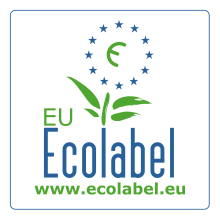EU Ecolabel: ADEME, AMF and the Ministries respond to the consultation on the third technical report
-
Project newsX


The development of the EU Ecolabel criteria for financial products continues with the publication, in November, of a third technical report (TR.3) by the JRC (Joint Research Center). This technical report takes into account stakeholders’ comments on the TR.2 as well as discussions and work carried out during subworking groups organized by the JRC over the summer of 2020, to which we were able to contribute, particularly on transition issues. This latest report provides important evolutions of the criteria with the inclusion of companies “investing in transition”, the removal of the size-pocket approach, the integration of the concept of investor impact, the addition of euro funds to the products scope and a significant strengthening of the eligibility threshold, for equity funds mainly.
In this context, our response and comments on this third technical report reflect our focus on striking the right balance between ambition and sufficient market uptake, two necessary conditions for the EU Ecolabel for Retail Financial Products to successfully contribute to a more sustainable financial system. This response presents the position of the French public authorities and takes into account discussions held during workshops and bilateral meetings with various stakeholders (banks, asset management companies, professional associations, NGOs, supervisory authorities). Furthermore, noting that discussions, both at the French and European levels, tend to focus on investment funds, we organized a working group specifically dedicated to banking players on the Ecolabel criteria for banking products. The inclusion of traditional savings products appears essential for the purpose of providing retail investors with widely-accessible, low-risk ecolabelled products. In addition, the availability of such products may support the development of supply of direct financing for a sustainable economy.
In our comments, we reaffirm our support for the implementation of the European Action Plan for Sustainable Finance and the development of an ambitious and realistic Ecolabel, developed in coherence with the other initiatives of the Action Plan: the Taxonomy, Disclosure, Benchmark and EU GBS regulations. We particularly welcome the following advances:
- The inclusion in the scope of multi-option life insurance products, and more particularly the inclusion of participation funds ;
- The permitted contribution of infrastructure and real estate assets to portfolios’ greenness ;
- The introduction of the concept of companies investing in transition ;
- The alignment of the exclusion criteria between equity and bonds and the inclusion of general purpose corporate bonds.
Furthermore, aiming for the success of the EU Ecolabel for Retail Financial Products, we recommend to include the following comments in a revised version of the Ecolabel criteria:
- In line with the “best products available” approach of the EU Ecolabel, adapting criteria to current market best practices, while providing the flexibility required to account for the gradual extension of the EU Taxonomy to new environmental objectives and economic activities in the coming years :
- Planning for a review of eligibility thresholds every three years, with a first review in 2023, to ensure the adaptation of criteria to future changes in the Taxonomy regulation ;
- Aligning the eligibility thresholds for mixed funds, bonds funds, FIAs, deposit and savings accounts at 50% ;
- Including a “neutral investment pocket” for equity UCITS funds, which would not be considered in the overall calculation of the portfolio greenness and cap at 20% of the AuM, to allow, for diversification purposes, investments in “neutral activites” (i.e. activities not defined by the Taxonomy yet). This approach should also include cash and should be temporary (to be revised in later revision round).
- Excluding solid fossil fuel activities, even in the case of a transition plan (and associated strategic investment plan), in line with the taxonomy regulation.
- Strengthening the framework applicable to strategic investment plans for companies investing in transition and their contribution to portfolios’ greenness to avoid greenwashing :
- Implementing a transitory cap on the share of companies “investing in transition” at 50% of the total assets under management (to be revised based on feedbacks);
- Clarifying the “commitment to close down” for the transport sector and reinforcing the phase-out plan as part of a transformation plan – the phase-out should lead to a closure/conversion of the excluded activities rather than their disposal and the company should no longer invest in new projects related to excluded activities;
- Specifying the course of actions for managers and Competent Bodies to follow in the event of any breach (or repeated breach) on the strategic investment plan’s objectives;
- Reinforcing the criterion for shareholder engagement, by mandating that shareholder dialogue be carried out with at least 50% of the companies investing in transition in the portfolio.
- Simplifying and clarifying the framework applicable to the provision of information to retails investors to ensure that it is clear, accessible and robust :
- Streamlining the calculation method for companies investing in transition by removing the green revenue growth indicator (GrGi) from the formula, which is difficult to appreciate and highly dependent on drivers outside the company’s control, to focus instead on the investment indicator (CapEx) ;
- Removing the “investing in green growth” category to focus on companies investing in transition. Simplifying the understanding of the criteria for retail investors ;
- Accompanying investors in their understanding of the issues relating to investor’s impact by creating a dedicated guide ;
- Adapting the reporting framework to the categories of assets and counterparties, while promoting as much as possible line-by-line information on the assets in the portfolio identifying the corresponding actions undertaken (including shareholders’ engagement activities) and rationale for impact ;
- Clarifying the content expected in annual reporting and investor’s impact report that should provide the saver with a clear picture of the impact mechanisms activated and the outcome expected.
- Widening the products scope of the Ecolabel to pension funds, infrastructure and real estate funds during the next revision of the criteria in 2023.


